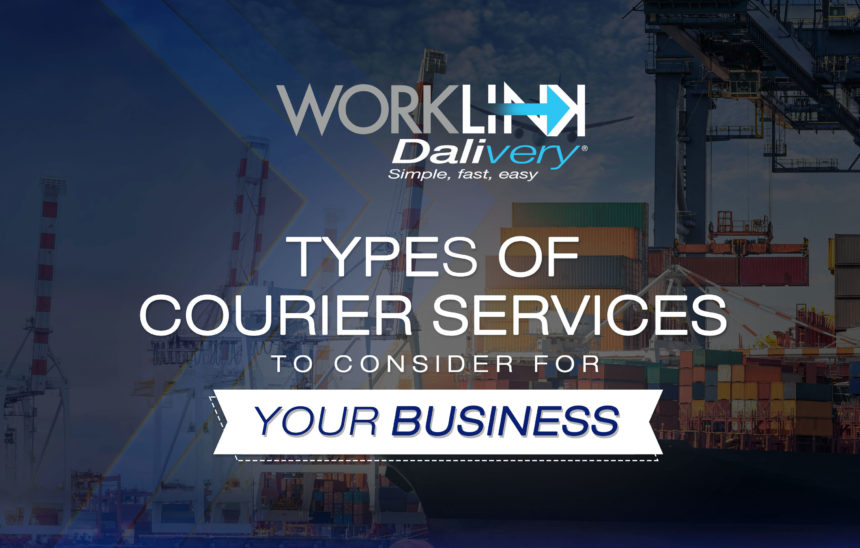If you’re running a business, you’ll need to avail of courier services at some point. Having supplies delivered to your shop requires one type of delivery service, though, while sending finished products to retail sellers requires another. You can’t decide on a delivery mode at random, as a poor choice will lead to at least a few complications. How do you make sure to choose the right type of courier service?
Worklink Services Inc. (WSI) provides various reliable freight services to fit shippers’ requirements. To help you decide on the best way to move your freight, here’s an infographic about the 4 types of freight services to consider for your business.

1. SEA DELIVERY
Pros
- Economical
- Accommodates all shapes, sizes, and weights of freight
- Best for bulk transportation
Cons
- Takes time
- Not ideal for time-restricted shipments
Types
- Full Container Load (FCL) – Freight that can fill a standard 20- or 40-foot container. It is charged with a flat rate which is lower than that of LCL.
- Less than Container Load (LCL) – Smaller amounts of cargo are shipped along with other freights with the same destination. It is charged based on how much space your freight takes up.
DID YOU KNOW? From the 16th to mid-19th centuries, international trade mostly utilized ships. This period is called the “Age of Sail.”
2. AIR DELIVERY
Pros
- Good for urgent shipment
- Delivers to all key destinations worldwide
Cons
- Only advisable for light shipments
- Costs for shipping larger, heavier goods may be prohibitive
3. LAND DELIVERY
The standard transport method for deliveries within the country.
Pros
- Economical
- Convenient
- Can deliver door-to-door
Cons
- Susceptible to traffic and speed limits
Most freight forwarding services offer truck delivery. This option is reliable and suitable for large-scale domestic consignments. Trucks also usually get easy clearance through the gateways leading to their destination. Shipments are also delivered by professional drivers.
There are two common modes of truck delivery:
- Truck Load (TL) – Ideal for oversized or overweight freight. Requires a full, dedicated truck. It’s not the cheapest option, but it’s fast, requiring no truck transfer like LTL.
- Less than Truckload (LTL) – Ideal for smaller items between 0.05 tons and 9 tons. Your shipment shares truck space with other freight, saving you on the cost of paying for a full truckload.
DID YOU KNOW? The first semi-trailer truck was invented in 1898 by carmaker Alexander Winton, who needed to transport his vehicles to buyers throughout the United States.
Another land delivery option is the mosquito delivery, which uses bikes and motorcycles. It is practical, given traffic situations and fuel costs. It also suits businesses that require delivery of goods. However, it only caters to light cargo.
4. RAIL DELIVERY
Rail freight delivery is not usual in the Philippines, but it’s still a generally cost-effective mode of delivery in many other countries.
Pros
- Economical
- Good for bulk goods or hazardous materials
- Good for long distances
Cons
- Not as convenient as highway transport
- Results in more deliveries fulfilled by trucks
Three of these four courier services are among WorkLink’s versatile selection of DALIvery services, all offered at competitive rates. While there are other options available, these services should be enough to answer your business needs. Feel free to consult our DALIvery experts for reliable freight forwarding solutions!
Found this infographic helpful? Follow our blog for more articles about courier services.


